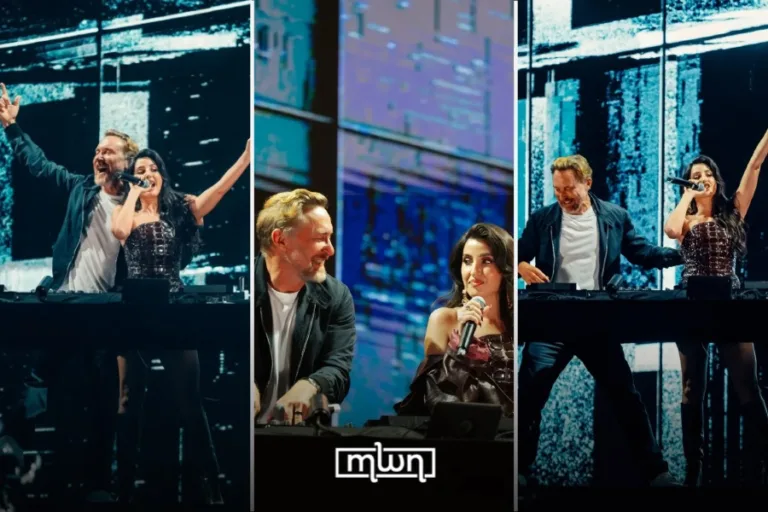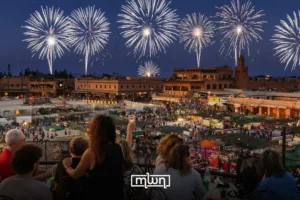The Arab World Institute (IMA) aims to showcase the painter’s world, creating a space for dialogue between cultures and imaginations.
Marrakech – The Institut du Monde Arabe (IMA) in Paris came alive on Tuesday evening with the grand opening of the “Mehdi Qotbi Retrospective.”
The event, attended by the artist himself and a host of distinguished personalities, celebrated the illustrious career of one of Morocco’s most iconic contemporary artists.
Running until January 5, 2025, the exhibition showcases over a hundred pieces spanning Mehdi Qotbi’s prolific career, from the 1960s to the present day.
Featuring paintings, graphic works, tapestries, and ceramics, the retrospective exhibit offers an intimate glimpse into the evolution of Qotbi’s signature style, which continues to evolve and expand artistic horizons.
“This retrospective gives us the opportunity to dive into more than fifty years of reation, a half-century of Mehdi Qotbi’s work. It reveals the richness of his journey, as he masterfully connects two cultures -Moroccan and French,” said Nathalie Bondil, the IMA’s Director of the Museum and Exhibitions, and the exhibition’s curator, in a statement to MAP.
Mehdi Qotbi, who also serves as the president of Morocco’s National Foundation of Museums, expressed his gratitude for the exhibition, stating, “I’m incredibly happy with this unique opportunity given by the IMA to retrace 55 years of creativity, color, joy, and happiness. Every moment has been a lived happiness, and I hope to continue experiencing and sharing this joy with others.”
The retrospective aims to illuminate Qotbi’s world, offering a space where cultures and imaginations intertwine.
Influenced by both Moroccan traditions and European art movements, Qotbi has developed “disscripture,” a new artistic language where Arabic letters and symbols merge.
Born in Rabat in 1951, Qotbi’s passion for painting emerged early in life. After joining the Beaux-Arts of Rabat in 1967, he moved to France in 1969, earning his diploma from the Beaux-Arts in Toulouse in 1972.
He then continued his studies in Paris, balancing his artistic career with a teaching role in plastic arts from 1973 to 2007.
Through this vibrant retrospective, Qotbi’s work not only bridges the gap between cultures but also invites viewers to embark on a journey of creative dialogue and discovery.
















